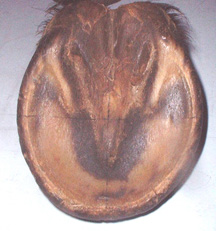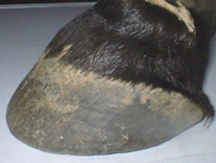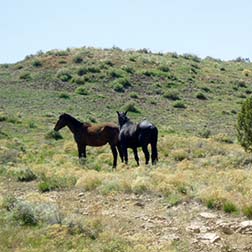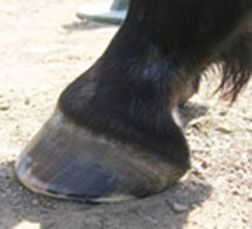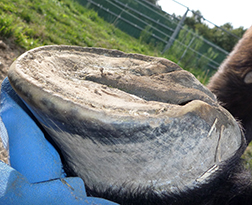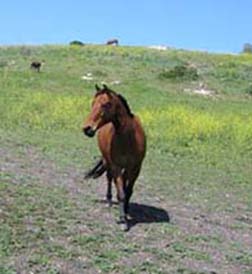










|
Principles of Natural Hoof Care We have all heard the expression “no hoof, no horse,” which expresses the paramount importance of the hoof to the horse as a whole. Unlike many other animals, a horse can not survive without healthy feet. Although it has become an engrained belief that shoeing is the way to maintain horses’ hooves, in contrast to the health and soundness of the wild horse, our domestic horses suffer from an epidemic of unsoundness, such that "of the 122 million equines found around the world, no more than 10% are clinically sound, some 10% (12.2 million) are clinically, completely and unusably lame. The remaining 80% (97.6 million) of these equines are somewhat lame... and could not pass a soundness evaluation or test" (American Farriers Journal, Nov//2000, V. 26, #6, p. 5). Natural Hoof Care holds that these problems can be prevented and resolved with a natural barefoot trim and management practices. As most of our domesticated horses no longer have the freedom to roam over great stretches of open range, Natural Hoof Care and creating a more natural diet and lifestyle enables us to create similarly strong, healthy hooves in our domesticated horses.
Wild horse hooves .
“The foot was designed to be unshod. Anything that you add to the foot, like a horseshoe that is nailed on, is going to interfere with the foot’s natural process. Most horseshoes have six to eight nails, possibly one to three clips, all of which constrict the foot’s ability to expand and contract. Add pads, packing, any number of alternatives to the shoe, and you create a gait alteration. It all intereferes with the natural process of the mechanism. Ideally, for the foot to work the way it has been designed through evolution to work, you would rather do less than more to the foot.” |
|
